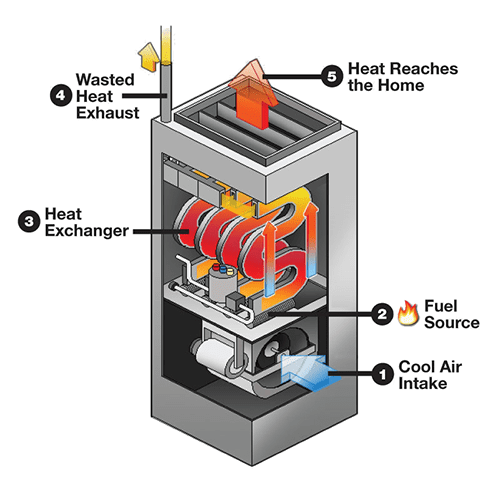
The heat exchanger in your furnace plays a pivotal role in keeping your home warm and comfortable during the chilly months. Understanding its significance is essential, as it can also pose risks if not properly maintained.
Learning about the fundamental aspects of a furnace heat exchanger is crucial. It’s important for you to understand what it is and how it functions to distribute warmth throughout your home.
Additionally, discovering the potential issues that can arise if your heat exchanger fails and knowing the steps to take in such a situation can help you ensure your furnace operates safely and efficiently. Gaining insights into this critical component equips you to safeguard both your comfort and well-being during the heating season.
What Is a Heat Exchanger in a Furnace?
The heat exchanger is the part of your furnace that puts heat into your home, separating the combustion process from your breathing air. When air is drawn into your furnace, it passes over the hot surface of the heat exchanger, where it gets heated. Subsequently, this warmed air is directed through the ductwork, reaching various living areas in your home.
What makes the heat exchanger even more vital is its role in the combustion process. This process generates several potentially harmful gasses, including the deadly carbon monoxide. However, the heat exchanger acts as a protective barrier, separating these toxic gasses from indoor air. This essential function ensures that while your furnace efficiently produces heat, the dangerous byproducts of combustion are isolated and safely vented outside. Understanding the significance of the heat exchanger underscores its role in maintaining both warmth and air quality within your home.
Why Do Heat Exchangers Fail?
Heat exchangers are designed to provide your home with safe and breathable air during its life expectancy. However, as time passes, the constant heating up and cooling down will wear out the metal. This can cause the heat exchanger to split or break. With that in mind, it’s important to invest in furnace maintenance so your unit will last a longer period of time.
To better understand how to prevent breakdowns, take a look at some of the reasons your heat exchanger can fail:
- Age and Wear: Heat exchangers can weaken over time, especially in older furnaces.
- Corrosion: Exposure to moisture or condensation can lead to corrosion, compromising the heat exchanger’s integrity.
- Overheating: Excessive heat, often caused by restricted airflow or a malfunctioning blower, can cause cracks or damage.
- Improper Sizing: If the furnace is not correctly sized for the home, it may overheat the heat exchanger.
- Gas Leaks: Gas leaks within the combustion chamber can result in overheating and damage to the heat exchanger.
How Do You Know If Your Heat Exchanger Has Failed?
Do you suspect that your heat exchanger is failing? If so, it’s imperative to reach out to a heat exchanger expert for immediate assistance. When a technician arrives at your house, they will use a heat exchanger camera to get a clear picture of the condition of your device. Once they have a good understanding of the situation, they can make an informed decision on whether they should repair or replace the component.
What Happens if My Heat Exchanger Fails?
Because of the serious risk that carbon monoxide presents, heating technicians are required to shut down a failed furnace, and you won’t be able to operate the system. What are your options?
In most cases, if the component is causing problems, you can’t repair the heat exchanger. However, you can replace the heat exchanger with a new one. An expert technician will help you find the right style for your furnace, safely install it, and ensure it works properly.
Replacing the furnace is often the best choice if you have an older furnace or higher energy bills. This option is almost always more costly upfront, but it often makes more sense than investing major repair money into an older system. If you are in need of furnace replacement services in Indiana or Michigan, our team of technicians from Home Comfort Experts is here to help. We’ll examine your current unit, remove it, and install a new one that meets your needs and budget.
There is no doubt that some furnaces in our service area will fail this winter. With the help of a heat exchanger expert, you can make the best long-term choice for your furnace and your family’s comfort.
Contact us today and tell us the problems your heating unit is experiencing. Our certified technicians will listen to your concerns and create a reliable plan. Call us at (574) 319-9247 and set up an appointment with our team.



